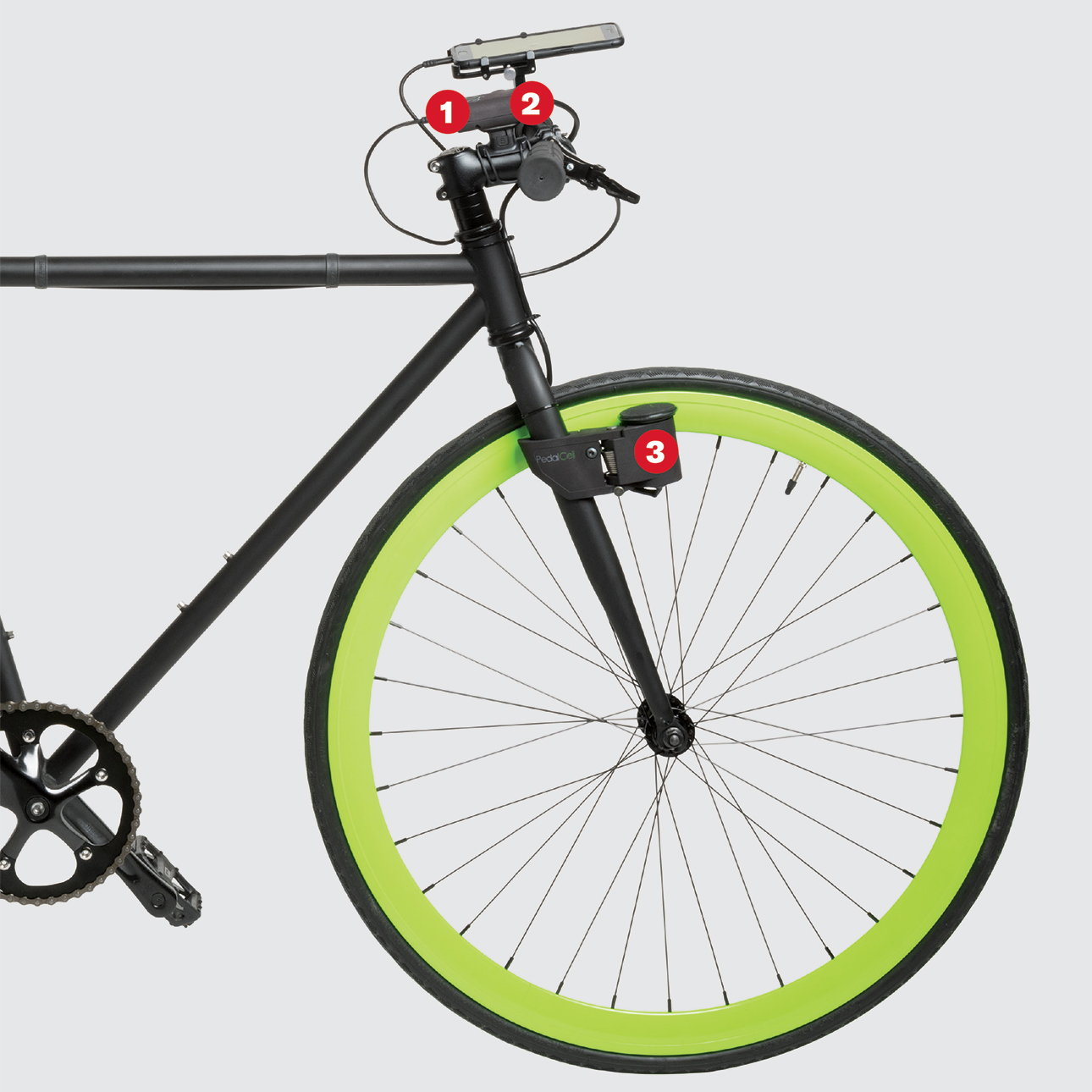Vishaal Mali, a McCormick School of Engineering senior, understood that more people might ride bikes if there was a reliable source of power onboard. So he started PedalCell with his University of Michigan–based co-founder, Adam Hokin. The two developed technology to convert the kinetic energy from a bike into stable and continuous electricity. PedalCell’s CadenceX product can power a rider’s devices, including a smartphone, bike lights and GPS. Chicago-based Future Founders named PedalCell one of its 2018 Outstanding Student Startups of the Year at its EntrepreneurshipU Awards last spring.
1. USB Ports
Located in the Power Hub, the two USB-C ports allow riders to constantly use electricity during their rides. The high-power port is used for phones or GPS. The slower charge port is good for lights and other safety devices that need less power but stay on for longer periods.
2. Smart Power Hub
The brains of the system, the Smart Power Hub allocates how the generated power is used via PedalCell’s patent-pending technology. An onboard microcontroller reads rider speed and other data to decide how much power to distribute so that there is always power available on a ride with minimal drag.
3. High-Efficiency Generator
Attached to the front fork of the bicycle, a custom-designed brushless DC generator creates energy from the spinning of the wheel. Its output can reach up to 20 watts, six times more power than most other dynamo generators.
On in Minutes, Off in Seconds
CadenceX can be added onto almost any existing bicycle in minutes with an easy-to-use lockable clamp. And riders can easily turn the product on or off via a built-in decoupling mechanism.




Reader Responses
It would be good to see a dynamo that can convert and store enough power to assist pedaling during inclines. With lithium batteries and light alloys, maybe we should be there by now?
—Prabu Bangalore, India, via Northwestern Magazine
Sorry to disagree with Dr. Steinitz, but that's not the way I read this article. There's more than one innovation here. First is the smart power hub, which determines how to distribute the power between the USB for lights and the USB for phones/GPS, based on the amount of electricity being generated. Second is the high efficiency generator itself, which is a far cry from the one on your bike (and mine) in 1963. It's brushless, produces six times more power than most dynamo generators, and puts minimum drag on the wheel. So I think the claim of innovation here is quite valid.
—Stephen B. Rudolph '75, Wilmette, Ill., via Northwestern Magazine
This article claims the innovation to be a small electric generator driven by friction from the front wheel of a bicycle.
This is remarkably similar, if not identical, to the generator on my vintage 1963 bicycle, which powered the head and tail lights.
—Michael Steinitz '70 PhD, Antigonish, Nova Scotia, Canada, via Northwestern Magazine
No one has commented on this page yet.
Submit a Response